Rank Species | Genus Sida Higher classification Sida | |
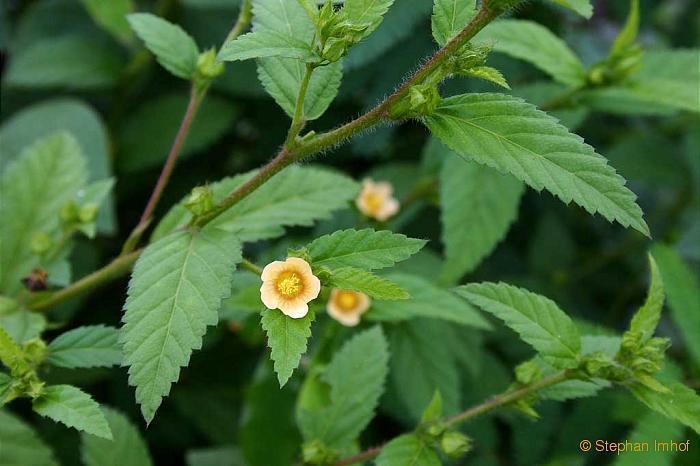 | ||
Similar Sida, Mallows, Sida acuta, Sida cordifolia, Urena lobata | ||
Sida rhombifolia top 6 facts
Sida rhombifolia (arrowleaf sida) ( Sanskrit : atibalā अतिबला ) is a perennial or sometimes annual plant in the Family Malvaceae, native to the New World tropics and subtropics. Other common names include rhombus-leaved sida, Paddy's lucerne, jelly leaf, and also somewhat confusingly as Cuban jute, Queensland-hemp, and Indian hemp (although S. rhombifolia is not related to either jute or hemp). Synonyms include Malva rhombifolia. It is used in Ayurvedic medicine, where it is known as kurumthotti. This is another species, native to India, Sida cordifolia (White Mallow)
Contents
- Sida rhombifolia top 6 facts
- Facts
- Octonary ingredients of sida rhombifolia formulations pankaj oudhia s medicinal plant database
- Uses
- References

The stems are erect to sprawling and branched, growing 50 to 120 centimeters in height, with the lower sections being woody. The dark green, diamond-shaped leaves are arranged alternately along the stem, 4 to 8 centimeters long, with petioles that are less than a third of the length of the leaves. They are paler below, with short, grayish hairs. The apical half of the leaves have toothed or serrated margins while the remainder of the leaves are entire (untoothed). The petioles have small spiny stipules at their bases.
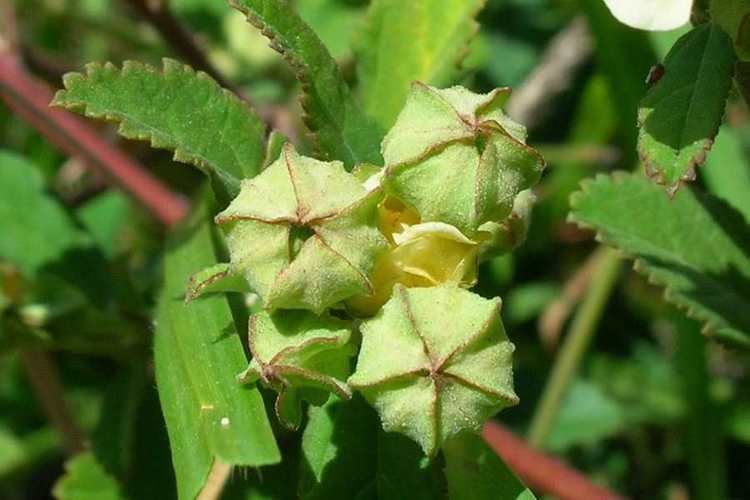
The moderately delicate flowers occur singly on flower stalks that arise from the area between the stems and leaf petioles. They consist of five petals that are 4 to 8 millimeters long, creamy to orange-yellow in color, and may be somewhat reddish in the center. Each of the five overlapping petals is asymmetric, having a long lobe on one side. The stamens unite in a short column. The fruit is a ribbed capsule, which breaks up into 8 to 10 segments. The plant blooms throughout the year.
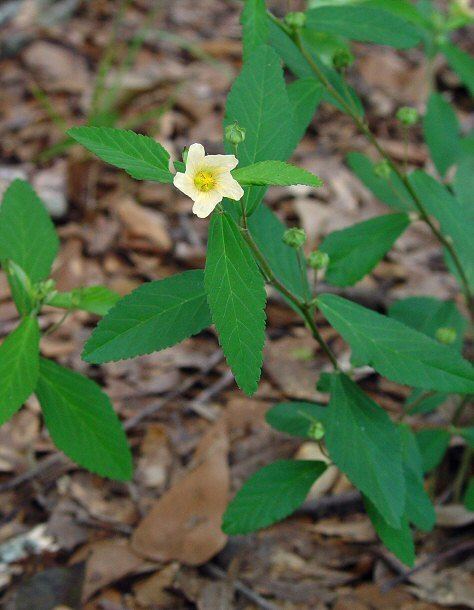
This species is usually confined to waste ground, such as roadsides and rocky areas, stock camps or rabbit warrens, but can be competitive in pasture, because of its unpalatability to livestock.
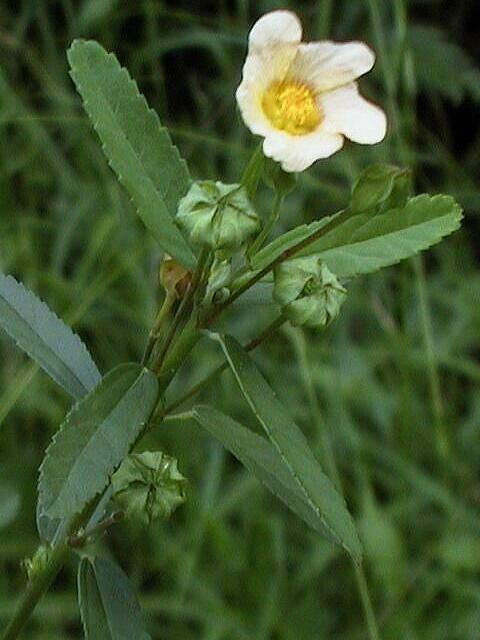
Facts
- It's used in Ayurvedic medicine and has several other names like Paddy's lucerne and jelly leaf.
- The plant has erect, branched stems and dark green, diamond-shaped leaves. The leaves are toothed at the top and smooth at the bottom.
- The flowers are delicate with five creamy to orange-yellow petals. The plant has a ribbed fruit and blooms throughout the year.
- It often grows in waste grounds but can compete in pasture due to its unpalatability to livestock.
- The stems are used for cordage and broom-making. The plant has high-quality fiber and significant nutritional content. It has various medicinal uses, including relieving swelling and headaches, and treating rheumatism.
- The herb is used to treat diarrhea in Australia, leaves are smoked in Mexico, and a stimulating tea is prepared in India.
- In Eastern Indonesia, the leaves are used to treat boils and the root is used for infant asthma.
Octonary ingredients of sida rhombifolia formulations pankaj oudhia s medicinal plant database
Uses
From The International Institute of Tropical Forestry, a division of the United States Department of Agriculture Forest Service:
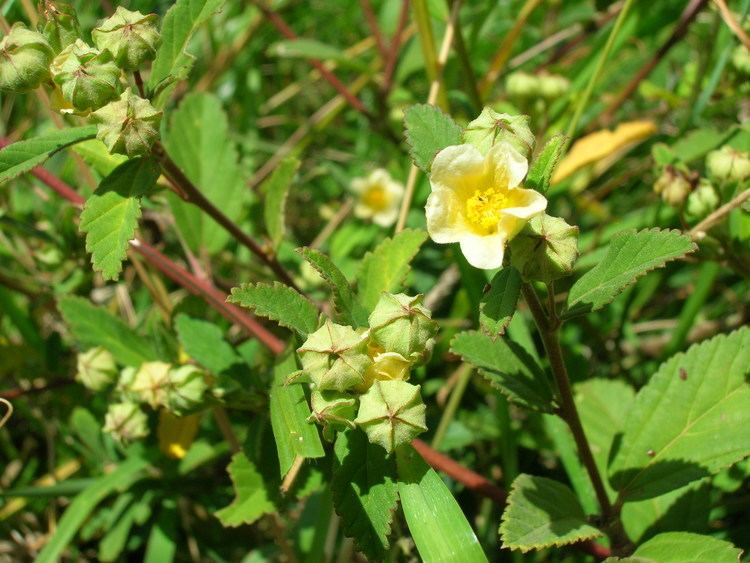
Arrowleaf sida stems are used as rough cordage, sacking, and for making brooms. The stems have a high quality fiber and were once exported from India and elsewhere as “hemp” (Guzmán 1975, Holm and others 1997). Chemical analysis revealed that the leaves contain respectable amounts of nutrients: 74,000 to 347,000 ppm protein, 94,000 to 475,000 ppm carbohydrates, 33,000 to 167,000 ppm fiber, 14,000 to 71,000 ppm fat, and 16,000 to 81,000 ppm ash. However, it was reported that the root contained 450 ppm alkaloids and the presence of ephedrine and saponin (Southwest School of Botanical Medicine 2002). Another source reports an alkaloid content in the root of 0.1 percent and the presence of choline, pseudoephedrine, beta-phenethylamine, vascin, hipaphorine and related indole alkaloids (Shaman Australis Ethnobotanicals 2002). Perhaps because of these chemicals, arrowleaf sida is unpalatable to cattle (Kuniata and Rapp 2001). Arrowleaf sida is cultivated across India for its notable medicinal properties. The crushed leaves of the plant are applied to reduce swelling, while its fruits are utilized to alleviate headaches. The mucilage from the plant serves as an emollient, and the root is employed in the treatment of rheumatism. In addition, Australian Aborigines use the herb to address diarrhea. In Mexico, the leaves are smoked, and in India, a tea made from the plant is consumed for its stimulating effects.
In Alor, Eastern Indonesia the leaves are used to treat boils, and the root is used to treat infant asthma.
